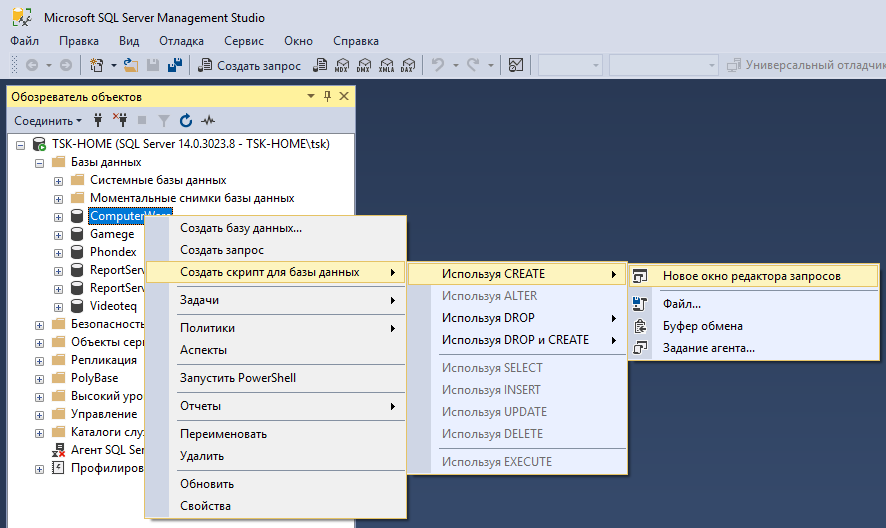 Чтобы заскриптовать все объекты базы данных MS SQL Server, можно воспользоваться EM где выбрать базу и затем
Чтобы заскриптовать все объекты базы данных MS SQL Server, можно воспользоваться EM где выбрать базу и затем
Все задачи -> Generate SQL Script.
Но можно использовать и следующую команду:
scptxfr.exe /s ServerName /d BaseName /P Password /f C:\script.sql
Другие параметры
SCPTXFR /s <server> /d <database> {[/I] | [/P <password>]}
{[/F <script files directory>] | [/f <single script file>]}
/q /r /O /T /A /E /C <CodePage> /N /X /H /G /?
/s - Indicates the source server to connect to.
/d - Indicates the source database to script.
/I - Use integrated security.
/P - Password to use for 'sa'. Note that login ID is always
'sa'.
If /P is not used or if a password does not follow the
flag, a null password is used. Not compatible with /I.
/F - The directory into which the script files should be
generated. This means one file is generated for each
category of objects.
/f - The single file into which all scripts are to be saved.
Not compatible with /F.
/q - Use quoted identifiers in the generated scripts.
/r - Include drop statements for the objects in the script.
/O - Generate Original Equipment Manufacturer (OEM)script files.
Cannot be used with /A or /T. This is the default behavior.
/T - Generate UNICODE script files. Cannot be used with /A or
/O.
/A - Generate ANSI script files. Cannot be used with /T or /O.
/? - Command line help.
/E - Stop scripting when error occurs.
Default behavior is to log the error and continue.
/C - Indicate the CodePage that overrides the server CodePage.
/N - Generate ANSI PADDING.
/X - Script stored procedures (SPs) and extended stored
procedures (XPs) to separate files.
/H - Generate script files without header (the default is: with
header).
/G - Use the specified server name as the prefix for the
generated output files (to handle dashes in server name).